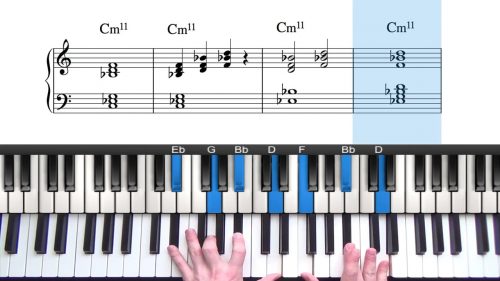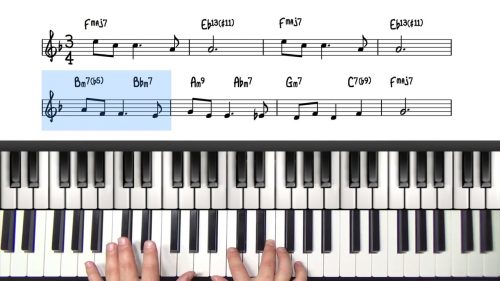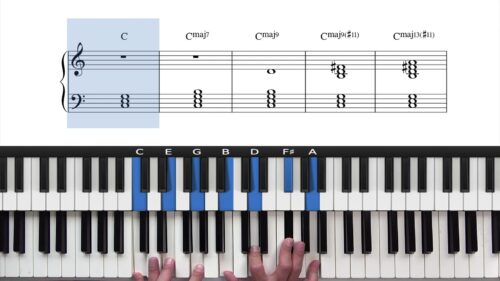Advanced Upper Structure Application
In this lesson we are going to explore some advanced applications of upper structure triads.
Before watching this lesson, I would recommend that you have watched the series of lessons on upper structure triads as we will be building upon that theory.
Also check out the lesson on dominant chord voicings. In that lesson we went through 11 of the 12 notes of the chromatic scale and explored the different types of dominant chord voicings that you can play under each of these potential melody notes.
In this lesson we’re going to take it a step further and we will look at a few interesting examples of harmonising multiple melody notes over a single dominant chord. We will be using and building upon information from all of the lessons mentioned above and you can find links to these lessons below the video.
Practice Tips
-
Don’t feel you need to use upper structures on every dominant, this will likely sound too rich. Just sprinkle them in here and there and mix up with lighter, sparser dominant voicings.
- Always remember variety is the key. Upper structures are complex, difficult voicings, but that doesn’t mean they sound good on every dominant chord you come across.







upper structure is only for dominant chord or have practice both maj and min sir
Hi Karthikeyan,
Good question!
Upper structure triads are mainly used for dominant chord voicings. This is because they give us simple formulas to memorise complex altered dominant chord voicings such as 13#11, #5#9, and 13b9.
However, we can still apply the same principle to major and minor chords. We have a dedicated lesson on that here: pianogroove.com/jazz-piano-lessons/major-minor-upper-structures/
The key benefit of visualising the upper and lower structure is that we can easily maneuverer and manipulate the shapes in each hand to create many different textures using the same chord colour.
Check out the lesson above for more information.
Cheers,
Hayden